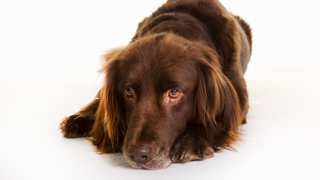As the hybrid of two active parent breeds, Sheepadoodle exercise requirements are fairly extensive. With the herding history of the Old English Sheepdog combined with the intelligence of the Poodle, these crossbreeds are both energetic and task-oriented, and will do best if they do exercises that stretch their legs a good bit and stimulate them mentally. They also make good jogging companions.
The typical adult Sheepadoodle, depending on its age and overall activity level, will need at least an hour of proper exercise per day, which you can accomplish with a couple of good walks and a play period. You can start exercising your Sheepadoodle puppy at three months of age by taking it on short (10-minute) walks, then increasing the walks' length and frequency as the puppy grows.
There are, of course, a few precautions to consider when exercising your Sheepadoodle: first, puppies younger than nine months old shouldn't participate in activities that include a lot of jumping, running, and navigating of stairs, as doing so can injure their still-developing joints and bones. And regardless of age, it's recommended that you use a leash when you and your Sheepadoodle are in public. These dogs can have both strong herding instincts and high prey drives, so they'll chase other animals or try to "herd" moving objects--people, bicyclists, even other pets--if given the chance; a leash will help you control your Sheepadoodle in these situations. Even when exercising in your own yard, the area will need to be securely fenced to keep the dog from running off to chase interesting-looking critters.
Safeguards aside, it's important to exercise your Sheepadoodle every single day. If bored or restless, these smart, task-oriented dogs will become frustrated, disobedient, and destructive--so consistent exercise will be great for both the dog's and your own peace of mind. A few exercise ideas:
- Walking/Jogging: Two 30-minute walks (or 20-minute jogs) per day is a good target
- Fetch: Your Sheepadoodle will chase a ball or stick for hours
- Tug-of-War: Great indoor, rainy-day activity; use a rope or old towel
- Swimming: These dogs usually love the water
- Dog Park: Sheepadoodles enjoy the company of other dogs
- Hiking: Excellent bonding activity; bonus if you can find a remote area where the dog can be off-leash
When indoors, it's good to give your Sheepadoodle access to one or more balls or chew-toys that will allow the dog to burn excess energy. It's also recommended that you establish a regular exercise schedule for the dog, such as walks or jogs after breakfast and dinner and a play period in the afternoon.

